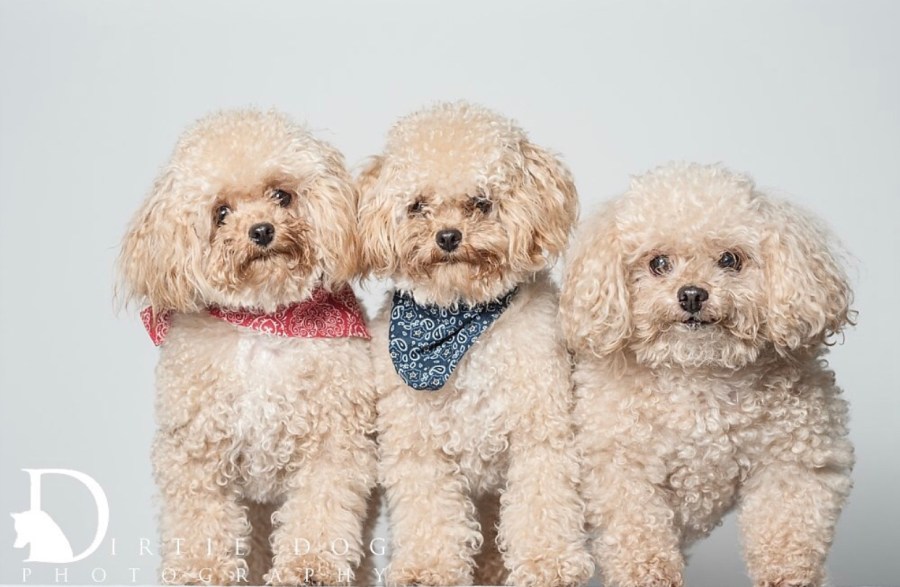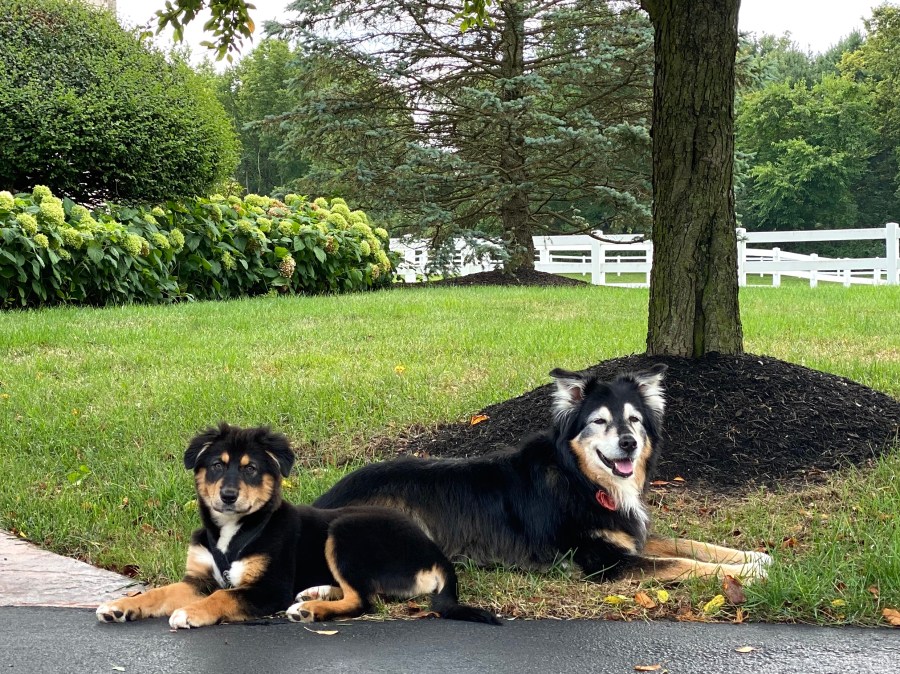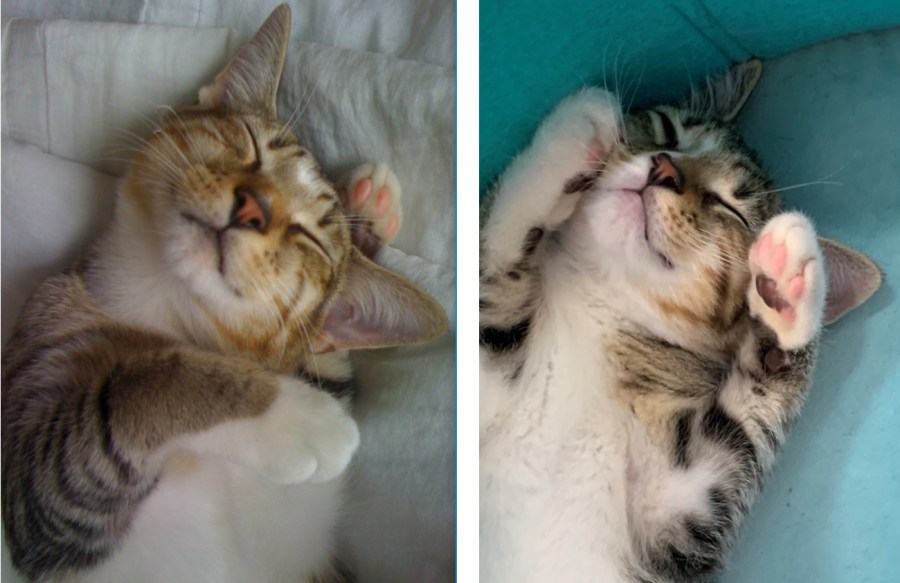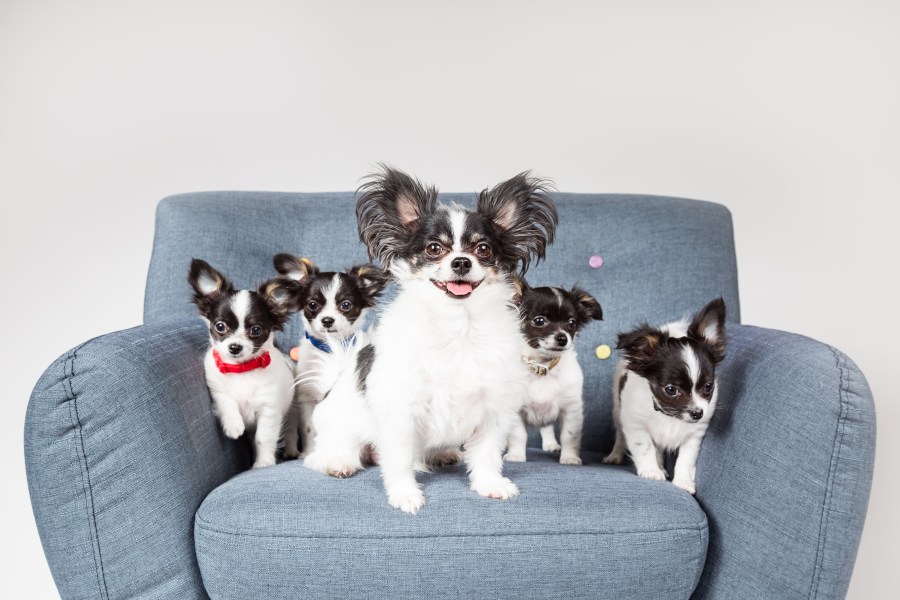Do cloned pets actually look and act like the original?

Front and center is the original dog, surrounded by clones. (Courtesy: Viagen Pets and Equine)
(NEXSTAR) — Cloning may sound like something out of a science fiction movie, but it’s already happening here in the United States. One company has the patented technology to clone cats, dogs and horses, and will do it for you right now – for a price.
Viagen charges $35,000 to clone a cat. Cloning a dog will set you back $50,000, and a horse is $85,000.
That’s clearly a huge investment. What exactly do you get for your money?
First, Viagen needs a skin sample from a pet that’s either still alive, or just recently died. A lot of people turn to the company right after their pet dies, said spokesperson Melain Rodriguez, and it’s possible to do successfully if the death was within a few days ago and the body has been kept refrigerated.
Then starts the real science. The sample is shipped to the company’s lab in Texas, where cells from the skin are cultured. It takes a few weeks for those cells to grow and multiply until there are about 1 million cells. Those are then harvested, frozen and stored as long as they’re needed. (Viagen charges a lower rate for this genetic preservation: $1,600 plus an annual fee of $150, said Rodriguez.)
That’s phase one. When it’s time to clone the pet, the lab scientists will take an egg from a donor pet and remove that egg’s nucleus. Then, a nucleus from one of the millions of cells grown in Viagen’s lab is swapped in, giving that egg the nuclear DNA of your original pet.
What happens next is proprietary, Rodriguez said, but she explained it as giving the egg “a little jolt of electricity,” making it think it’s fertilized without any sperm. It starts to multiply and grow into an embryo, which is then implanted in a surrogate animal, which will eventually give birth to your cloned pet. Viagen transfers multiple embryos to boost the odds of a success, so sometimes customers will end up with multiple cloned puppies or kittens.
“What you have is an identical genetic twin to the original animal,” Rodriguez said. Do identical genes mean identical appearances?
“It’s like they’re identical twins,” said Rodriguez. “Human identical twins have the same DNA, but if human identical twins have freckles, their freckles are never exactly the same and in the same spot, or birthmarks or things like that.”
“Freckles” and “birthmarks” look more like color markings on pets. If your dog has a white stripe down the middle of its forehead, Rodriguez explained, the clone will typically have a white stripe on its head too – but it just might not be the exact same size or placement.
The pet’s personality is a bit harder to predict. “That’s probably the No. 1 question that we get: what is the personality of the clone going to be like compared to the original one?” Rodriguez said.
While the personalities of the clone and the original may differ, their general dispositions are usually alike. If your cat is very fearful, there’s a good chance its clone will be too. If your dog is laidback, the clone will probably be pretty chill.
“Temperament and intelligence have shown to have a very strong genetic component, so those are things that we see that are very similar in the cloned animals,” she said.
Sometimes there are quirks that the clone has that are eerily similar to the original pet, Rodriguez said. She’s heard customers say their clone has the exact same favorite toy as the original, or loves to sit in the exact same spot in the yard. They make for good anecdotes, but could just be coincidences.
Personality is a mix of genetics and environment, explained Rodriguez. “We caution the client to not expect a reincarnation of the original pet.”














